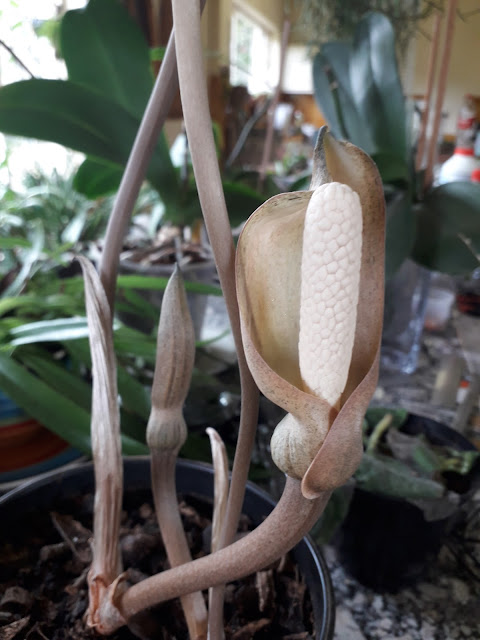Methuselah's beard lichen, Usnea longissima, a well know medicinal plant is a lichen in the family Parmeliaceae grows epiphytically on trunks and branches of trees in the eMalangeni forest.
Usnea longissima is a pale grayish-green fruticose lichen that grows like leafless tassels which anchored themselves on bark or twigs.
Like other lichens Usnea longissima is a symbiosis of a fungus and an alga. In the genus Usnea, the fungus belongs to the division Ascomycota, while the alga is a member of the division Chlorophyta. The branches of Usnea have an inner central cord which is elastic when wet.
Methuselah's beard lichen Ursnea longissima in the eMalangeni peat swamp forest
Usnea lichens have a history of use that spans centuries and countries from ancient Greece and China to modern Turkey, from rural dwellers in South Africa to modern-day naturopathic physicians and herbalists in the United States.
Usnea lichens are rich in usnic acid, which has demonstrated in vitro antimicrobial activity against bacteria, viruses, and protozoa. Additionally, it exhibits anti-inflammatory and analgesic activity.
Usnea longissima reproduces via vegetative means through fragmentation, asexual means through soredia, or sexual means through ascogonium and spermatogonium. The growth rate of Usnea longissima in nature is slow. An aid in identifying the genus Usnea is the elastic chord or axis running through the middle of the thallus that can be revealed by gently pulling a filament apart from either end.
Methuselah's beard lichen, Usnea longissima
Usnea longissima is very sensitive to air pollution, especially sulfur dioxide, it can therefore be used as a bioindicator, because it tends to only grow in those regions where the air is clean and of high quality. Where the air is totally unpolluted, they can grow to 10–20 cm long.
Usnea longissima where it occurs is often used as nest insulation material by birds such as the cape white eye.
When dry Usnea longissima is extremely flammable which makes it ideal to be used as a fire starter.













No comments:
Post a Comment